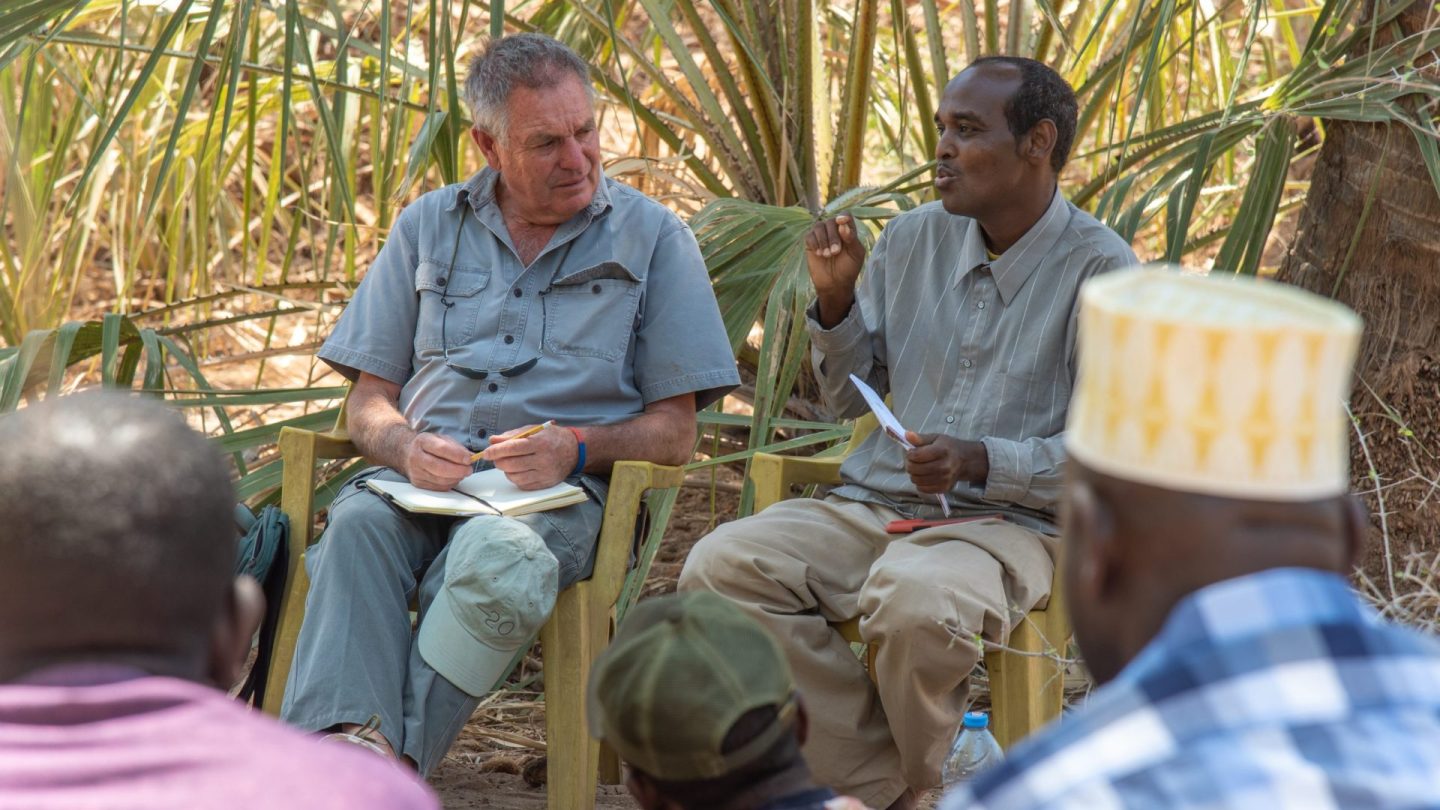
Barely managing to stay afloat in canoes constructed from woven branches, fishermen paddle across Kenya’s Lake Baringo searching for lungfish. Several have already hauled their catch ashore on a tiny island, formerly a peninsula serving as a sanctuary for endangered Rothschild’s giraffes.
When water levels started to rise and land was cut off, action had to be taken, explains conservationist Ian Craig, who came up with the idea of constructing a wooden barge – nicknamed the ‘giraft’ – to float nine animals back to the mainland.
Now community members of the Ruko conservancy have plans to build an eco-lodge on the island, and Ian has flown in to help their ambitions take shape.
As the founder and Chief of Conservation for the Northern Rangelands Trust, an umbrella organisation knitting together 43 community conservancies in northern Kenya, Ian has been the spark – and frequently a catalyst – for dozens of innovative initiatives.
He came up with the concept of an elephant underpass running beneath the A2 national highway to reconnect an ancient migratory route between the Ngare Ndare Forest and Mount Kenya; helped Sera conservancy set up Kenya’s first community-owned black rhino sanctuary; and has established a project in Garissa County to boost declining populations of hirola – the world’s rarest antelope.
Reluctant to take credit, however, the modest 70-year-old shies away from the spotlight at all times.
Since growing up on the Laikipia Plateau, Ian has played a key role in transforming his family’s 62,000 acre ranch into a community-owned conservancy, tourism enterprise and haven for endangered wildlife.
During his 26-year tenure at Lewa Wildlife Conservancy, not a single rhino was lost to poaching – a success he puts down to carefully nurtured relationships with neighbouring communities. Lobbying of international governments resulting in ivory bans has also kept elephants safe from harm.
Now his attention is fixed firmly on people.
“When you turn a corner with species like that, you realise these animals need somewhere to go. You need to invest in space.
“Conservation is about engaging with people to lobby political support for a concept that is going to look after wildlife. It’s that circle which will allow this to endure, to continue and to grow.”
Flying between conservancies in his yellow bi-plane, Ian attends meetings on riverbanks, in simple shacks and under the shade of date palms. In these unconventional boardrooms, important decisions are made by communities while Ian sits attentively and takes notes.
“People are driving this,” he insists, enthusiastically reeling off a list of grassroots conservationists leading the charge. “I don’t even need to be here. I could be gone tomorrow.”
In Swahili, he explains, the word ‘conservancy’ has found its own definition. It means bringing people together; improving security; giving young people jobs.
“It’s about unity, not animals,” he declares, firmly. “Put the focus on people and conservation happens on its own.”
Words and images by Sarah Marshall
